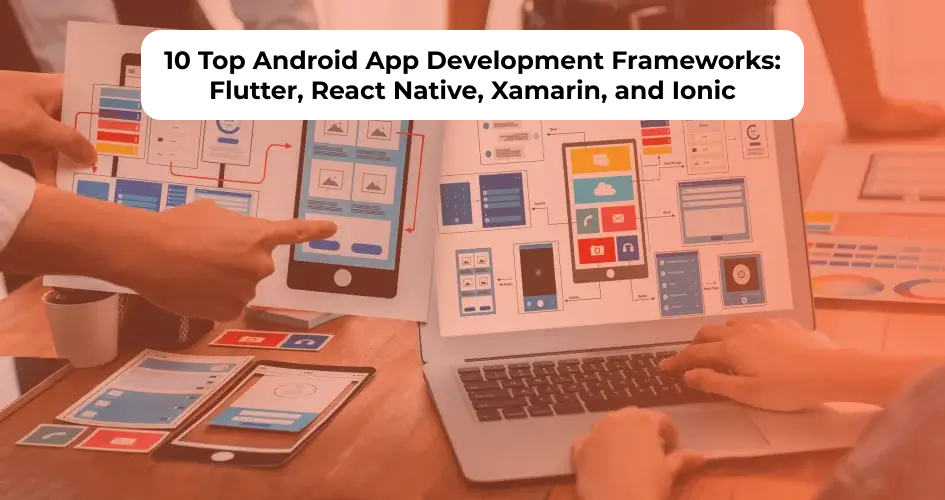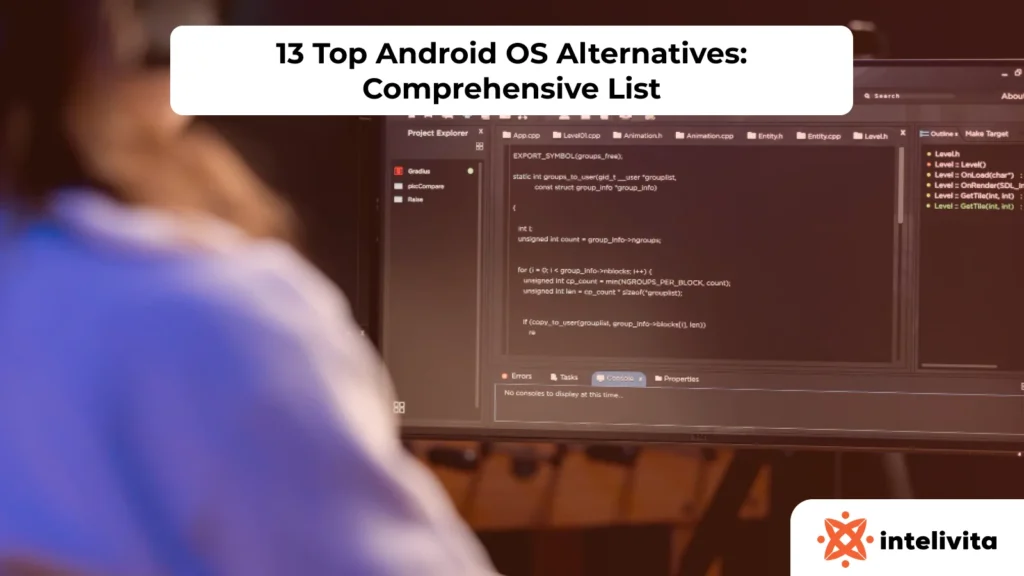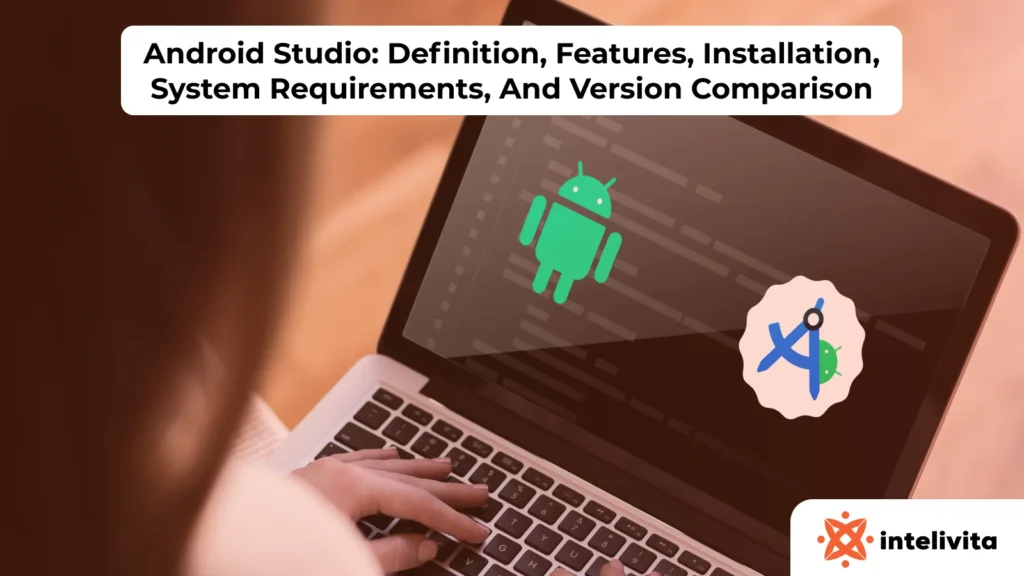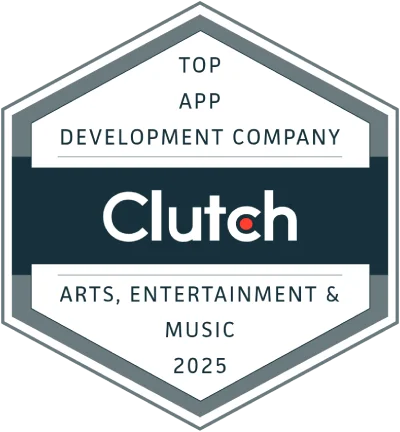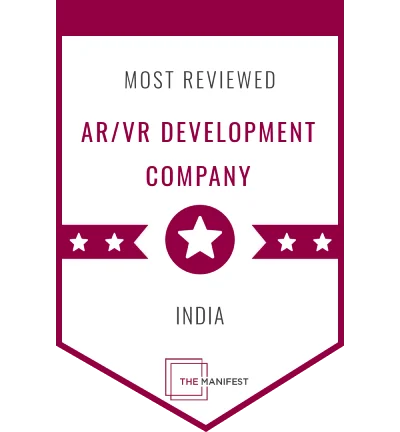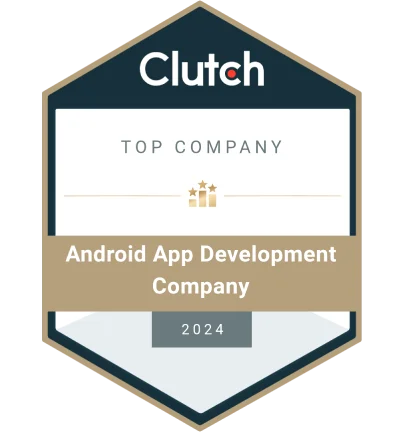An Android app development framework is a toolkit of Android-specific libraries, reusable components, templates, and build tools that accelerate app creation. It provides pre-written code and standardized project structures, enabling developers to reuse code, access device APIs, and maintain consistency across devices.
The primary purpose of an Android app development framework is to establish a uniform architecture across Android app features and devices so that the overall quality can be maintained.
Android app development frameworks are of two types: native frameworks, integrated with the Android SDK to deliver maximum performance and full device access, and cross-platform frameworks, built for multi-OS deployment with a single reusable codebase that enables faster development across Android, iOS, web, and desktop.
According to a 2023 Statista report, cross-platform mobile frameworks are used by 46% of developers worldwide, with Flutter and React Native leading adoption. Google Play alone hosts over 3.5 million Android apps as of 2024, making frameworks critical for efficiency, scalability, and security in application development.
The top Android app development frameworks are as follows:
- Flutter
- React Native
- Xamarin
- Apache Cordova
- Ionic
- Adobe PhoneGap
- Titanium SDK
- Android Jetpack
- Corona SDK
- NativeScript
1. Flutter
Flutter is an open-source UI software development framework designed to build natively compiled applications across multiple platforms using a single codebase. It is known for its widget-based architecture, which allows developers to create visually appealing and highly customizable user interfaces.
Google first introduced Flutter in 2017, with its stable release arriving in 2018. It quickly gained traction due to its fast rendering capabilities and efficiency in cross-platform development. Many companies have adopted Flutter to streamline development processes and reduce costs associated with maintaining separate codebases for different platforms.
Flutter uses Dart, a programming language also developed by Google. Dart is optimized for fast execution, making it suitable for high-performance mobile applications. Flutter supports cross-platform app development, allowing developers to build applications for Android, iOS, web, Windows, macOS, and Linux without writing separate code for each platform.
Flutter is easy to use, thanks to its hot reload feature, which enables developers to see real-time changes instantly. Its extensive collection of pre-designed widgets simplifies UI creation and customization.
To use Flutter, developers need the Flutter SDK, Dart SDK, and an integrated development environment (IDE) such as Android Studio, Visual Studio Code, or IntelliJ IDEA. These tools provide necessary debugging and testing functionalities for efficient development.
2. React Native
React Native is an open-source mobile application framework developed by Facebook that enables developers to build native-like applications for multiple platforms using a single codebase. It is based on React, a popular JavaScript library for building user interfaces, and allows for the creation of highly responsive and interactive mobile apps.
Facebook first introduced React Native in 2015 to improve mobile development efficiency. It quickly gained popularity due to its ability to deliver near-native performance while leveraging web development expertise. Many major companies, including Instagram, Airbnb, and Walmart, have used React Native for their mobile applications.
React Native primarily uses JavaScript, with support for TypeScript. It also allows integration with native code written in Java, Kotlin (Android), Objective-C, and Swift (iOS) for performance-critical components. React Native fully supports cross-platform development, enabling developers to create apps for Android and iOS using the same codebase while maintaining a native-like user experience.
React Native is relatively easy to use, particularly for developers familiar with JavaScript and React. Its fast refresh feature enables real-time code updates, making the development process more efficient. However, complex applications require additional native coding.
To use React Native, developers need the React Native CLI, Node.js, Android Studio (for Android development), Xcode (for iOS development), and an IDE such as Visual Studio Code. These tools provide debugging capabilities and help streamline development.
3. Xamarin
Xamarin is an open-source framework for building cross-platform mobile applications using a single codebase. It enables developers to create native-like applications for Android, iOS, and Windows while leveraging the power of the .NET ecosystem.
Originally founded in 2011 by engineers who developed Mono, Xamarin was later acquired by Microsoft in 2016 and became an integral part of the .NET framework. Since then, it has been widely used in enterprise and consumer applications due to its performance and seamless integration with Microsoft technologies.
Xamarin primarily uses C# and the .NET framework, making it a preferred choice for developers familiar with Microsoft’s ecosystem. It also allows direct access to native APIs through Xamarin. Android, Xamarin.iOS. Xamarin fully supports cross-platform development, enabling developers to write a single codebase and deploy it across Android, iOS, and Windows platforms while maintaining native UI elements and device functionality.
Xamarin is moderately easy to use, especially for developers experienced with C# and .NET. Its hot reload feature speeds up development, but performance requires optimization compared to fully native development. To develop with Xamarin, developers need Visual Studio with Xamarin SDK, .NET Core, Android SDK, and Xcode (for iOS development). These tools help streamline the development process and provide debugging capabilities.
4. Apache Cordova
Apache Cordova is an open-source mobile development framework that allows developers to build applications using standard web technologies such as HTML, CSS, and JavaScript. It acts as a bridge between web applications and native device functionalities, enabling web-based apps to run like native applications on multiple platforms.
Originally developed by Nitobi in 2009, the framework was later acquired by Adobe Systems and rebranded as PhoneGap. In 2011, Adobe contributed it to the Apache Software Foundation, where it was renamed Apache Cordova and became a widely used tool for hybrid mobile app development.
Cordova applications are primarily written in JavaScript and use various front-end frameworks such as Angular, React, or Vue.js. They also support multiple plugins to access native device features like the camera, GPS, and file system. Apache Cordova supports cross-platform app development, allowing developers to create a single web-based codebase that runs on Android, iOS, Windows, and other platforms.
Cordova is easy to use, especially for web developers, since it does not require knowledge of platform-specific languages like Java or Swift. To build and deploy Cordova applications, developers need Node.js, the Cordova CLI, a code editor (such as VS Code), and platform-specific SDKs (Android SDK for Android development, Xcode for iOS).
5. Ionic
Ionic is an open-source UI toolkit that enables developers to build high-performance mobile applications using web technologies like HTML, CSS, and JavaScript. It provides a library of pre-built UI components that ensure a native-like experience across platforms.
Introduced in 2013 by Drifty Co., Ionic was initially built on AngularJS and Apache Cordova. Over time, it evolved to support React, Vue, and vanilla JavaScript, making it a flexible framework for modern mobile development.
Ionic applications are written in JavaScript or TypeScript and use Angular, React, or Vue as the front-end framework. It integrates with Capacitor, a native runtime that allows direct access to device APIs, improving performance over Cordova.Ionic supports cross-platform app development, enabling developers to create a single application that runs on Android, iOS, and the web through Progressive Web Apps (PWAs).
Ionic is easy to use, especially for web developers familiar with JavaScript-based frameworks. It provides a smooth learning curve and a rich set of UI components, making app development faster and more efficient. To develop Ionic applications, developers need Node.js, the Ionic CLI, a code editor (such as Visual Studio Code), and platform-specific SDKs like Android Studio for Android and Xcode for iOS.
6. Adobe PhoneGap
Adobe PhoneGap was a cross-platform mobile development framework that allowed developers to build applications using HTML, CSS, and JavaScript while accessing native device functionalities. It was based on Apache Cordova, providing a bridge between web technologies and native mobile capabilities.
Initially developed by Nitobi and later acquired by Adobe in 2011, PhoneGap became a widely used framework for hybrid mobile development. However, Adobe discontinued support for PhoneGap in 2020, encouraging developers to migrate to Apache Cordova or other alternatives. PhoneGap supported JavaScript as the primary programming language.
PhoneGap was designed for cross-platform development, enabling developers to write a single codebase that could run on Android, iOS, Windows, and other platforms. Due to its reliance on standard web technologies, PhoneGap was easy to use. However, performance limitations arose because it used a WebView to render applications, leading to slower execution compared to fully native solutions.
Developers needed Node.js, the PhoneGap CLI, a code editor, and platform SDKs like Android Studio or Xcode to build and test PhoneGap applications. Since its discontinuation, Apache Cordova, Ionic, and Capacitor have emerged as viable alternatives.
7. Titanium SDK
Titanium SDK is an open-source mobile development framework that allows developers to create native applications using JavaScript while compiling them into native code for improved performance. It was developed by Appcelerator, which Axway later acquired.
Launched in 2008, Titanium SDK gained popularity for its ability to bridge JavaScript with native APIs, providing better performance than traditional hybrid frameworks like PhoneGap. However, its adoption has declined in recent years due to the rise of more advanced cross-platform tools.
Titanium SDK primarily uses JavaScript, enabling developers to write code once and deploy it across multiple platforms. It supports cross-platform development, allowing apps to be built for Android, iOS, and other platforms from a single codebase.
Titanium SDK is considered moderately easy to use, but developers must learn its proprietary APIs and structure, which add complexity compared to standard web-based frameworks. To work with Titanium SDK, developers need Node.js, the Titanium CLI, Appcelerator Studio (optional), and platform-specific SDKs like Android Studio or Xcode for building and testing applications.
8. Android Jetpack
Android Jetpack is a suite of libraries and tools developed by Google to simplify Android development by handling common tasks such as lifecycle management, background work, and navigation. It enforces modern best practices and ensures consistency across Android versions and devices.
Google introduced Jetpack in 2018 as the successor to Android Support Libraries, consolidating components into a single modular toolkit. It quickly became the default choice for building native Android apps.
Jetpack uses Java and Kotlin for native development and does not support cross-platform deployment. Its UI toolkit, Jetpack Compose, leverages declarative Kotlin APIs to simplify native UI creation.
It is easy to use, especially for Kotlin developers, since it eliminates boilerplate code and reduces app crashes through built-in backward compatibility.
To use Jetpack, developers need Android Studio with Jetpack libraries integrated into the project environment.
9. Corona SDK (Solar2D)
Corona SDK, now known as Solar2D, is a cross-platform framework focused on 2D game development. It allows developers to build mobile and desktop games that run smoothly across devices.
First launched in 2009, Corona became popular among indie developers and major studios before being rebranded as Solar2D in 2020 when it was open-sourced.
It uses Lua, a lightweight scripting language optimized for speed, and supports deployment to Android, iOS, Windows, macOS, and connected TVs.
Corona is easy to use due to its real-time simulation and large plugin ecosystem that simplifies adding ads, analytics, and media features.
To use Corona, developers need the Solar2D framework, Lua environment, and an editor like Visual Studio Code, with optional native integration through C, C++, Java, or Objective-C.
10. NativeScript
NativeScript is an open-source framework for building native mobile applications using a single codebase. It provides direct access to native APIs, allowing apps to achieve near-native performance.
Developed by Telerik in 2015 and later maintained by Progress Software, NativeScript gained adoption across industries including retail, banking, and communication.
It supports development with JavaScript and TypeScript, along with optional integration of Angular or Vue.js, and enables cross-platform deployment for Android and iOS.
NativeScript is moderately easy to use, particularly for web developers, since it allows styling with a CSS-like syntax and comes with a strong plugin ecosystem.
To use NativeScript, developers need the NativeScript CLI, Node.js, and platform SDKs such as Android Studio and Xcode.
What is an Android App Development Framework?
An Android app development framework is a software toolkit that provides pre-built libraries, reusable components, and code templates to streamline mobile application development. It establishes a consistent structure for building apps, handles common functions like UI rendering and lifecycle management, and reduces repetitive coding. By standardizing the development process, frameworks improve efficiency, ensure compatibility across Android devices, and support faster delivery of secure and scalable applications.
What Are the Best Frameworks for Web App Development?
The most widely used web app development frameworks are Angular, React.js, Vue.js, and Django. These frameworks provide structured architecture, reusable components, and high performance, making them suitable for building scalable and interactive web applications.
What Are the Best Frameworks for Hybrid App Development?
The leading hybrid app development frameworks are Flutter, React Native, Ionic, and Apache Cordova. These frameworks allow developers to maintain a single codebase while deploying apps across Android, iOS, and web platforms, reducing development costs and time-to-market.

